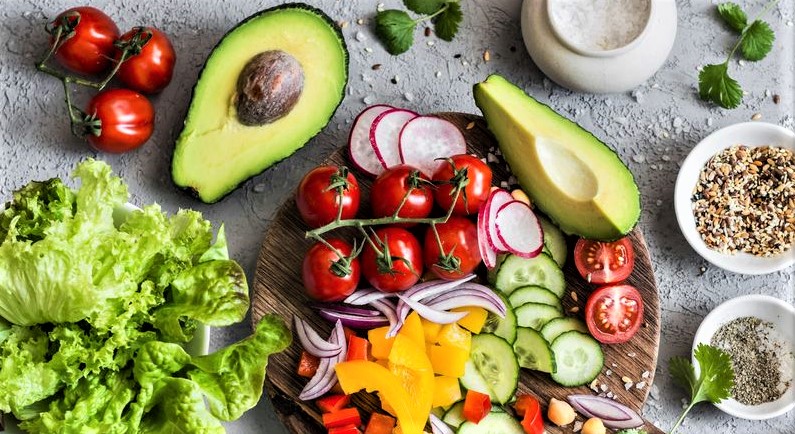An eating plan that works for you is one that’s sustainable!

If you have a thyroid disorder or an autoimmune condition and are struggling to lose weight, headlines of singer Kelly Clarkson’s dramatic transformation using the Plant Paradox diet might leave you wondering if it could leave you svelte too.Cleveland Clinic dietitian Dana Bander, MPH, RD, LD, CDE, says it’s entirely possible, though she cautions that the eating plan, based on “The Plant Paradox” by Steven Gundry, MD, isn’t a silver bullet ― let alone a proven, best choice.
“We all have very different compositions,” she says. “Different diets work for different people. Some people would thrive on it. But others would not like the foods on the diet and do horribly.”
The Palm Springs cardiac surgeon advocates an eating plan that shuns lectins, a type of protein found in common foods, like wheat, beans, potatoes, nuts and dairy. His controversial theory maintains eliminating (or finding substitutes for) these foods helps you lose weight and recover from chronic health conditions.
The more likely reason Clarkson successfully lost weight and improved her thyroid health on the Plant Paradox, she proposes, may be because the diet eliminated heavily processed foods that plague the Standard American Diet.
“People are eating all of these processed foods and are getting sick,” Bander says. “We’re seeing them in their 30s, 40s and 50s and they have illnesses of old age because they’re eating junk. What the Plant Paradox does is takes folks off of all the processed foods and puts them on whole foods. People are going to feel better, and they’re going to lose weight.”
Are Lectins Really a Problem?
While the Plant Paradox preaches lectins are “edible enemies” and designed to prevent predators (including humans) from devouring plants, Bander says there’s no hard evidence supporting they’re truly toxic.
“Not very many people believe that lectins are a problem,” she says. Lectin-bashing is widely controversial and flies in the face of age-old vegetarian populations in many parts of the world, such as India, that have successfully thrived on a diet rich in lectin-containing beans.
Many dietitians point out that cooking also reduces the lectin levels in foods dramatically, and no one’s noshing on raw chickpeas or red lentils.
Kicking Traditional Diets to the Curb
If you’re watching the numbers on the scale, you might be tempted by fad diets. But Bander says a better approach is to choose an eating plan you can stick with.
“I don’t like diets because people are waiting to go off their diet and go back to eating the way they always did,” she says. “You need something that’s sustainable.”
When evaluating a diet, Bander recommends asking yourself: “Can I imagine myself doing this in three months? In six months?” If you can’t, you’ll gain the weight back. And that ruins your metabolic rate.
“We see people who’ve been yo-yo dieters for all their lives who can’t lose a darn thing on 1,000 calories a day,” she says.
A better approach for people with autoimmune diseases, Bander says, is to get healthy on the inside. “Even if you don’t lose weight, you’ll handle your thyroid or the pain in your joints.”
A More Realistic, Proven Option
If you truly need the notion of a diet to give your eating structure, the one to pick is the Mediterranean Diet, Bander says.
“I believe in getting away from processed foods. The Mediterranean Diet is a good example,” she says. “You have to embrace vegetables and also prepare your own foods.”
Sound daunting? Bander suggests the best way to get started is to simply get started. Make one small change at a time.
“If you do these major overhauls like Kelly Clarkson, you might not be able to maintain it all at once,” she says.
Instead, just make one positive change. Start with whatever you can do: Wander around the farmer’s market or grocery store and pick out one new vegetable that you’ve never tried. Or maybe prepare it a different way. Oven-roast your veggies instead of always thinking “vegetables” means “salad.”
“You want it to be something you’re 99 to 100 percent positive you can do,” Bander emphasizes. “You want to build on positive change. If you can do that one thing successfully, then you can add … and add.”



